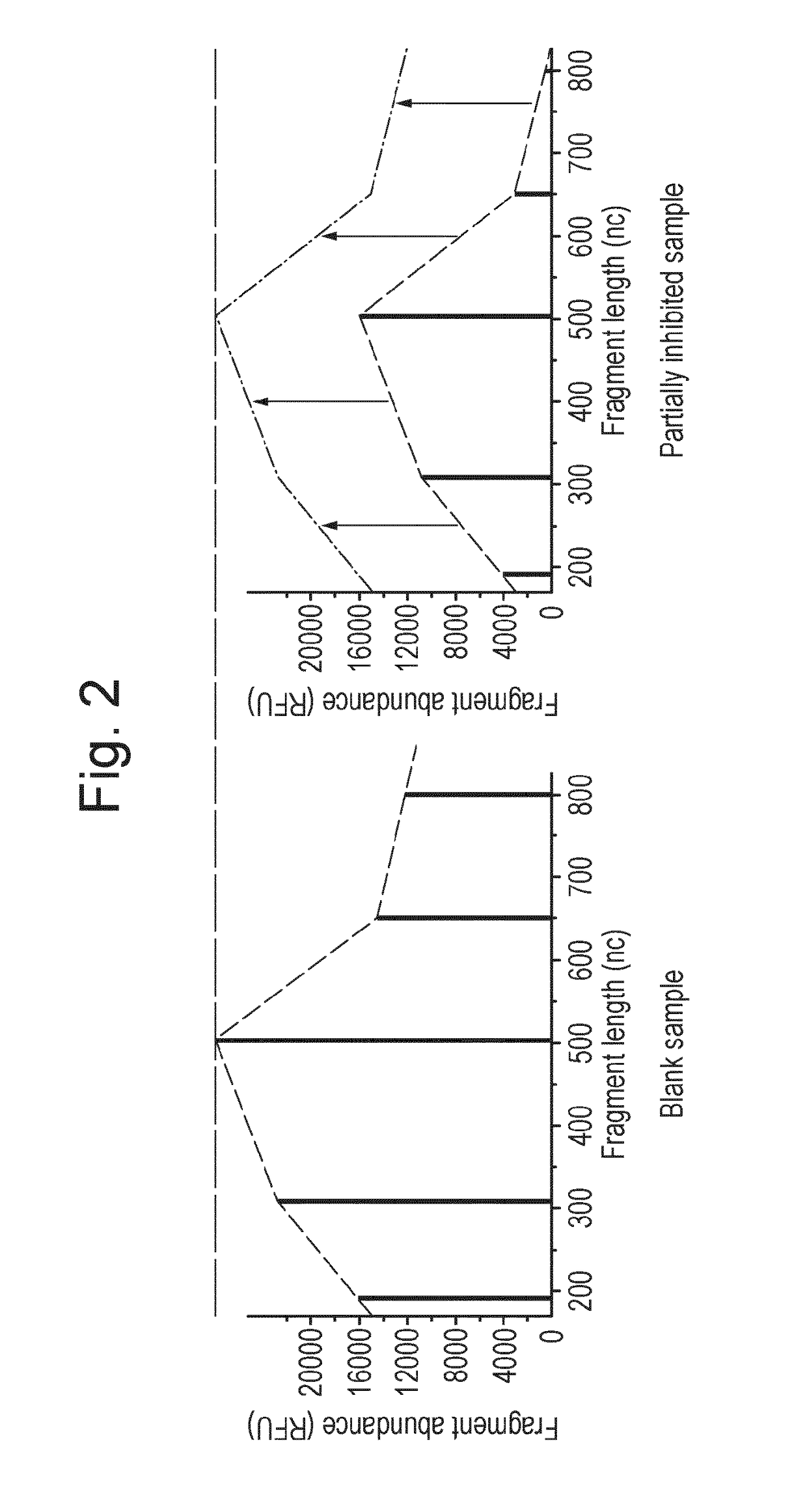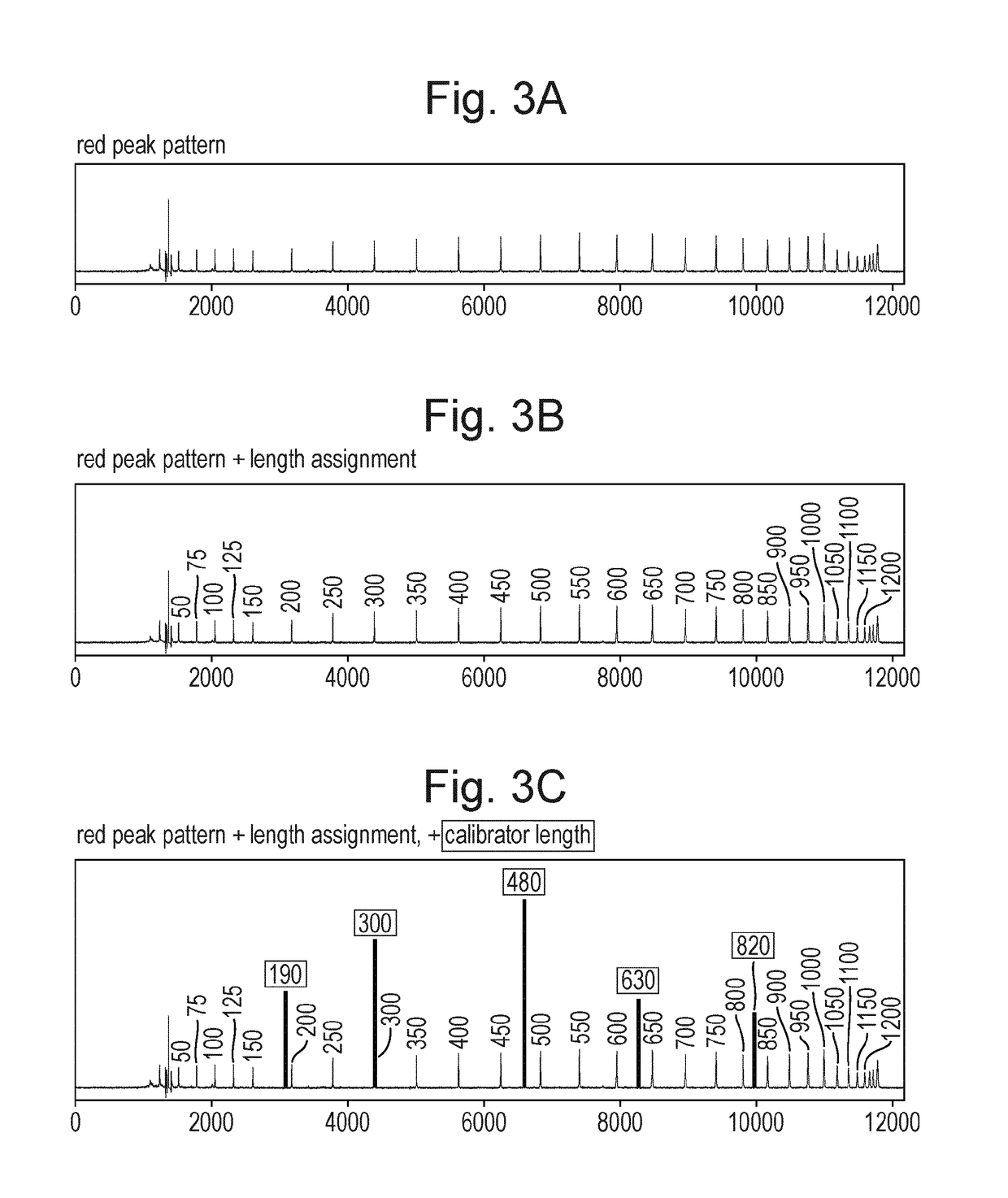Microbial population analysis
a microbial population and population technology, applied in the field of medical and environmental diagnostics, can solve the problems of low diagnostic yield, limited value, and difficult analysis of the complex microbial flora of the human intestin
- Summary
- Abstract
- Description
- Claims
- Application Information
AI Technical Summary
Benefits of technology
Problems solved by technology
Method used
Image
Examples
embodiment 1
[0249]A PCR calibrator system, comprising a set of PCR amplification primers at least one of which primers comprises a label, and a set of at least two PCR calibrators, each PCR calibrator consisting of a DNA fragment comprising a spacer region having a DNA sequence of a given length flanked by upstream and downstream adapter DNA sequences that comprise primer binding sites for binding of said PCR amplification primers wherein said set of PCR amplification primers is for PCR amplifying the spacer region DNA sequence of all PCR calibrators in said set of at least two PCR calibrators, wherein the spacer region DNA sequence comprised in each of said PCR calibrators in said set of at least two PCR calibrators is of a different length, and wherein each PCR calibrator in said set of at least two PCR calibrators is present in equal amount or in a known amount relative to other PCR calibrators in said set.
embodiment 2
[0250]A PCR calibrator system according to embodiment 1, wherein said spacer region DNA sequence is the sequence of at least a part of a microbial 16S-23S rRNA internal transcribed spacer (ITS) region, and wherein said adapter DNA sequences in said set of at least two PCR calibrators replace the DNA sequences of the conserved DNA regions comprised in the 16S and 23S rRNA gene sequences upstream and downstream of said ITS region in the microbial genome from which said ITS region originates and wherein said adapter DNA sequences have less than 30% sequence identity with the DNA sequences of said conserved DNA regions.
embodiment 3
[0251]A set of at least two PCR calibrators as defined in embodiment 1 or 2, wherein said set is comprised in a single replicon or single amplifiable template, preferably a DNA plasmid.
PUM
| Property | Measurement | Unit |
|---|---|---|
| temperature | aaaaa | aaaaa |
| volume | aaaaa | aaaaa |
| volume | aaaaa | aaaaa |
Abstract
Description
Claims
Application Information
 Login to View More
Login to View More - R&D
- Intellectual Property
- Life Sciences
- Materials
- Tech Scout
- Unparalleled Data Quality
- Higher Quality Content
- 60% Fewer Hallucinations
Browse by: Latest US Patents, China's latest patents, Technical Efficacy Thesaurus, Application Domain, Technology Topic, Popular Technical Reports.
© 2025 PatSnap. All rights reserved.Legal|Privacy policy|Modern Slavery Act Transparency Statement|Sitemap|About US| Contact US: help@patsnap.com



